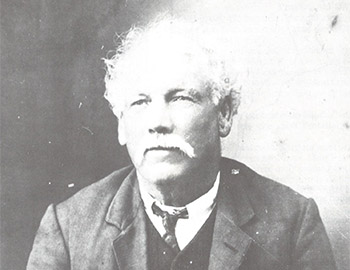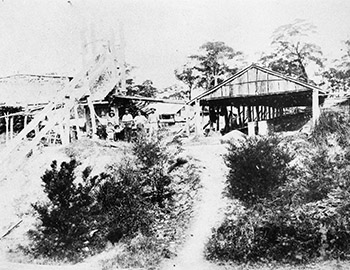
William and Hannah Hews along with their three children, were the first permanent residents of Frenchs Forest (originally Rodbrough).
William migrated to Australia with his parents in 1852 and worked in the construction industry before establishing a brickyard in Petersham.
In 1885, Hews bought ten hectares of land in Frenchs Forest. He relocated his brickworks there, moving his family and numerous employees from the Petersham brickyard.
He built a timber home on the site of pioneer James French’s original home, at the corner of Bantry Bay and Warringah Road.

The workers were housed in small cottages, slab huts and dormitories. The Forest soon become a thriving community with the addition of a tennis court, cricket ground and pavilion.
Using his own bricks, Hews built a new home in 1890, near the corner of Hilmer Street and Primrose Avenue. Many of Manly’s early homes were also reputedly built with Hews bricks.
Hews bricks were hand made in moulds and fired in kilns for about 72 hours, using timber from the nearby bush. One man could make 12 to 13 hundred bricks a day! The bricks were transported by horse and dray to Manly, Narrabeen and The Spit, where they were loaded onto a punt and shipped to Mosman and the city.
As the kilns consumed a huge amount of local timber, the brickworks impacted much of the surrounding bushland, already heavily logged by James French's sawmills. Hews Brickworks operated until World War I, when the essential clay was finally exhausted.
A small part of the Hews’ family land is now the site of Brick Pit Reserve with most occupied by the Northern Beaches Hospital. A plaque in the reserve honours the Aboriginal inhabitants and also commemorates the pioneers of Frenchs Forest.
William Hews was also elected as a representative for C Riding and then served as Shire President of Warringah Shire Council. He passed away in 1917 and his wife, Hannah in 1928. Both were buried in Manly Cemetery.
Find out more about early industry on the Northern Beaches in History Hub.

